The Giancarlo and Danna Olgiati Collection in Lugano opens its fall season with the exhibition Prampolini Burri. Of Matter, curated by Gabriella Belli and Bruno Corà, in collaboration with the Fondazione Burri in Città di Castello. An exhibition project that spans the entire Italian twentieth century to investigate the use of unconventional materials with respect to the traditional language of painting. The protagonists of this research on the expressive power of matter are Enrico Prampolini (Modena, 1894 - Rome, 1956) and Alberto Burri (Città di Castello, 1915 - Nice, 1995), both active in Rome and united by a revolutionary approach to art making.
The exhibition, which can be visited from Sept. 21, 2025 to Jan. 11, 2026, brings together some 50 works from international public and private collections to offer a journey from Prampolini’s futurist and polymateric experiments to Burri’s radical creations. The use of matter thus becomes the key to express the tensions, anxieties and transgressive power of a century marked by profound changes.
Prampolini, a multifaceted figure in Futurism and in dialogue with the European avant-gardes, began his investigations into polymaterism as early as 1914. Burri, on the other hand, after the experience of the war, chooses to reset all rhetoric to entrust to the material itself - sacks, tars, plastics, cretti, cellotex - the poetic force of the work. His gesture becomes radical, to the point of transforming fire, earth and even silence into artistic language.
“The paths taken by Prampolini and Burri, with conceptually different trajectories and meanings, show possible paths, certainly not the only ones, but certainly the most risky ones, those that renounce painting understood as a pure medium of centuries-old tradition, relying on everything else, cutting out and gluing, digging in the earth, using plastics, sacks, molds and burning, adding objects, and much more. A linguistic revolution that will become, as is known, in Burri’s work, an international norm and style, with a European primacy worth reflecting on,” explain Gabriella Belli and curator Bruno Corà.
The installation, designed by Mario Botta, stages two opposite universes: the works of Prampolini, displayed on white walls, and those of Burri, presented on completely black walls. A chromatic contrast that amplifies the conceptual and poetic distance between the two masters, while highlighting their common tension toward an art capable of transcending the limits of traditional painting.
Prampolini Burri. Of Matter represents the third chapter of the exhibition cycle promoted by Danna and Giancarlo Olgiati, dedicated to comparisons between some of the greatest protagonists of the 20th century: Balla and Dorazio (2023), Yves Klein and Arman (2024).
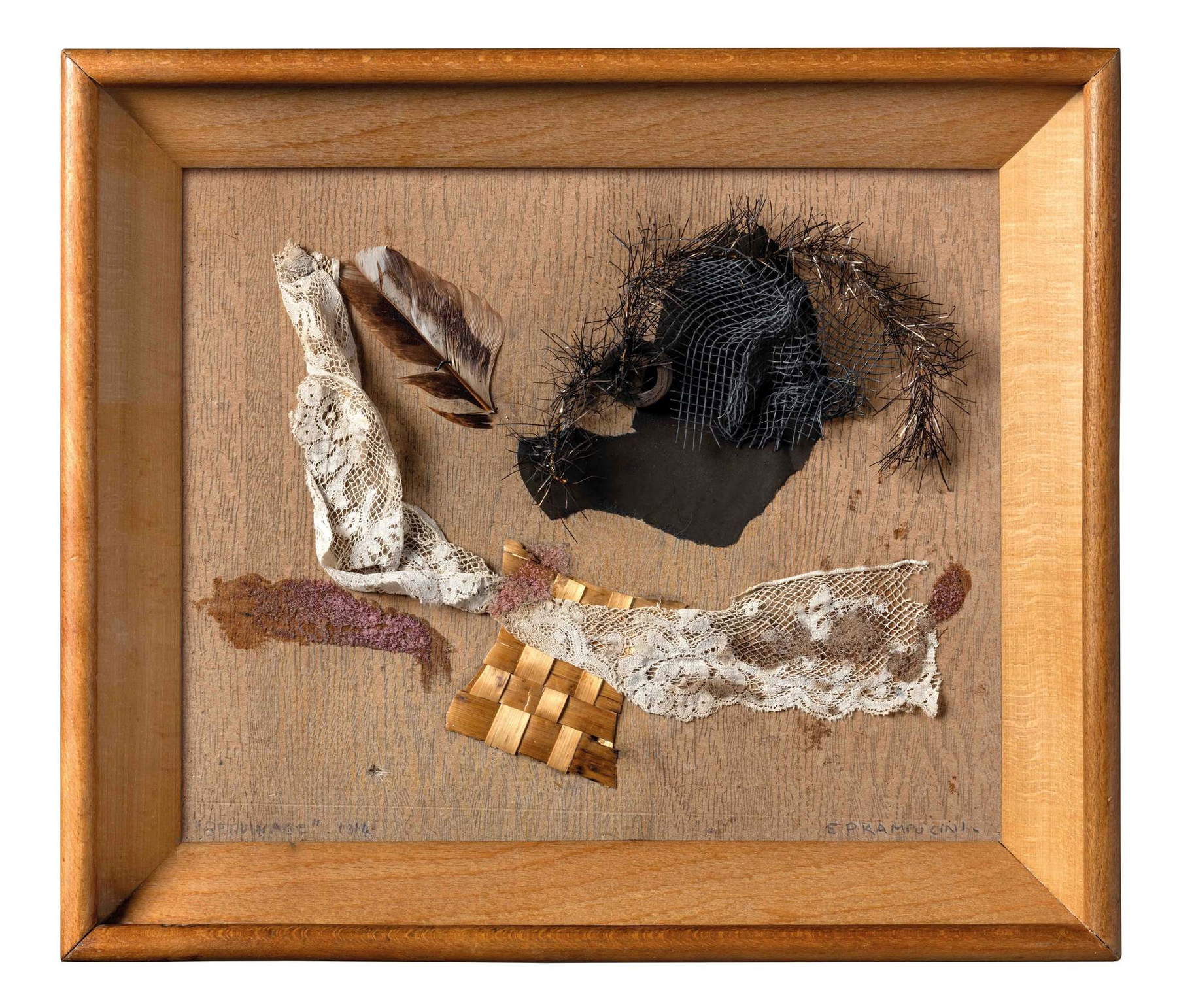
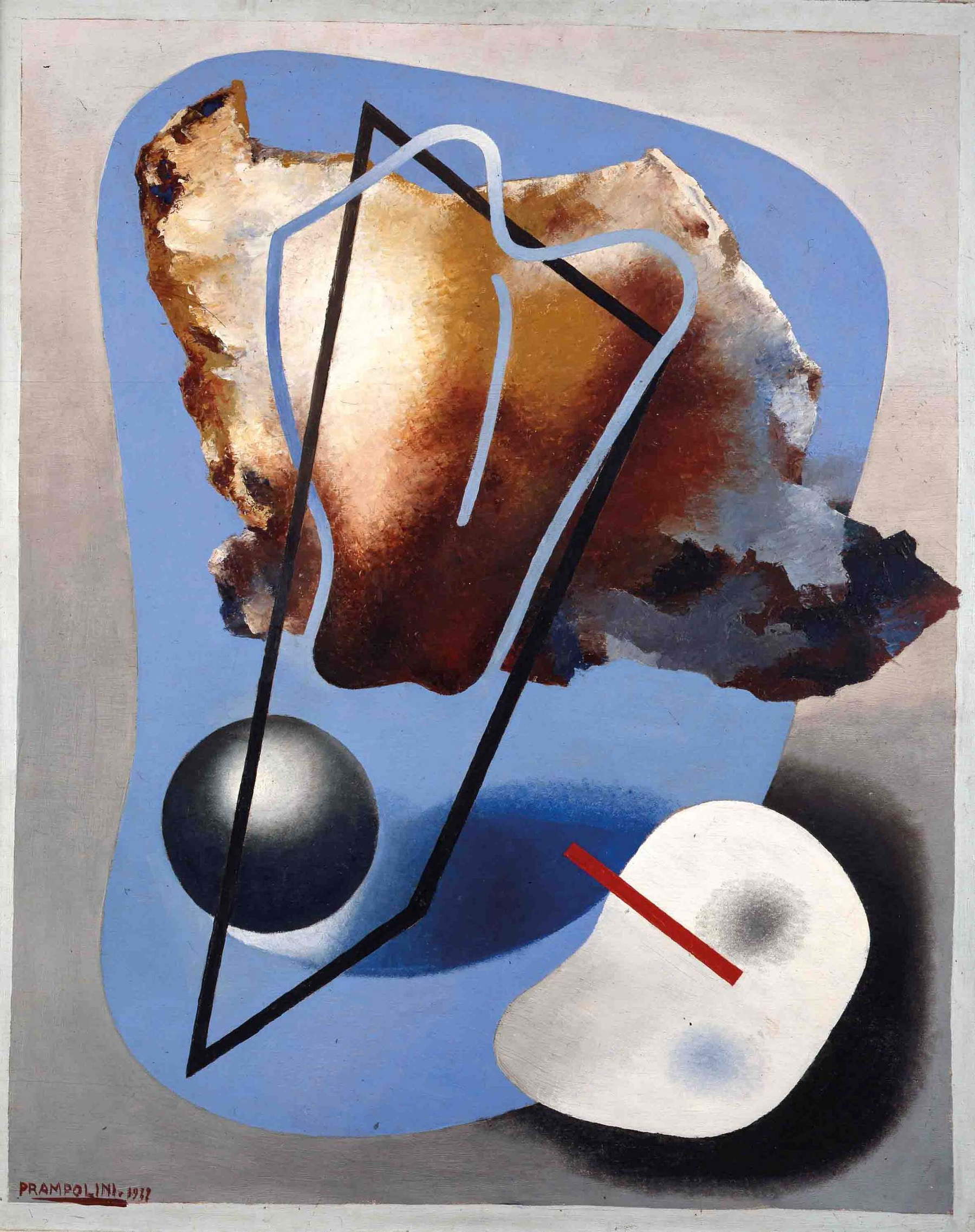
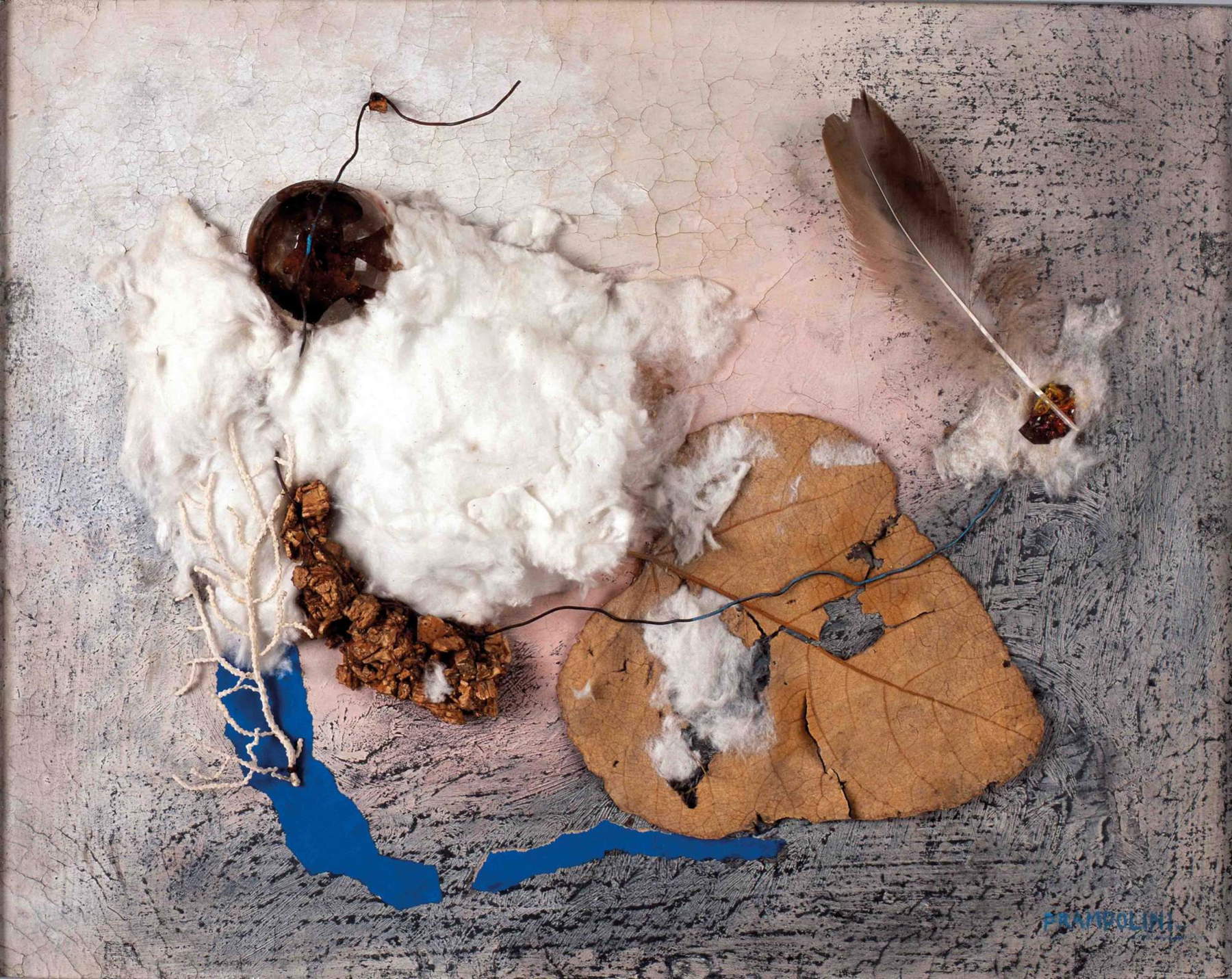
Active not only in painting, but also in stage design, architecture and applied arts, Enrico Prampolini joined Futurism in 1912, but reinterpreted its principles in an autonomous key and with an international perspective. In the 1920s his production turned toward mechanical art, as shown by works in the exhibition such as Paesaggio caprese (or Vesuvian Landscape), made around 1922. However, it is with Interview with Matter (1930) that the most visionary and cosmic phase of his career begins: here heterogeneous materials - sponge, cork, galalite - progressively limit the space traditionally reserved for painting. A rebellion against conventional techniques that Prampolini had already anticipated in 1914 with Béguinage, a refined polymateric assemblage also on display.
Several masterpieces of the celebrated polymateric paintings of the 1930s are on display at the Olgiati Collection. In works such as Mechanical Venus (1930) or Aerodynamic Geometry (1934-35), the artist elaborates unprecedented metamorphoses of forms, while Forms Forces in Space (1932) evokes alien worlds dominated by geometry and new psychic tensions of an organic matrix. Other works featured include polymathic works from the 1930s and early 1940s, such as Polymathic Automatism F (1941). These are works born of an interweaving of international relationships, cultivated by Prampolini in Paris since the 1920s, in dialogue with movements such as Surrealism and with abstract-concrete painters, whom he approached by joining the Parisian group Cercle et Carré.
“How Prampolini was able to disentangle himself between these two currents, to make a synthesis of them in a stylistic and meaningful convergence, capable of uniting aspects of one and the other, is the significant datum of this new phase of his work, which bears the seal of an internationality precious for his career, but also for the parterre of Italian painting of the time,” emphasizes curator Gabriella Belli.
The last polymateric paintings on display, dated to the 1950s, confirm the constant evolution of his research: Abstract Composition CR (1954), Abstract Tensions of the same year and Composition S 6: Sulfur and Cobalt (1955) testify to a continuous openness to the forms and languages of the time. Works that enshrine Prampolini’s role as an indispensable point of reference for the generations of painters who emerged in the late 1940s.
Burri’s intuitive conceptions related to the use of matter are far removed from Prampolini’s theorizing. In the aftermath of the Second World War experienced firsthand as a medical officer, a prisoner in Africa and then in Hereford, Texas, becoming a self-taught artist Burri embarked on a search for a new language. After a brief debut in figurativism, beginning in 1948, he decided to derive pictorial quality from the gesture of presenting matter, emptying it of all possible metaphor. It is a humble and raw matter, which comes to replace color.
“The aptitude for challenge, for the unexpected, for analysis, the ethical tension, the inclination to the compositional faculty, the innate sense of geometry, the ease in the use of any material at hand (...), direct the qualities and goals of ’redemption’ of the future painter destined to influence, from the postwar period onward, the sensibility of painting and sculpture making in the international art scene,” explains curator Bruno Corà.
The exhibition presents several exemplary works, from the cycles of the early years, to the Compositions, the Tars of the years 1948-1950 to the Sacchi, masterpieces that lead Burri’s art toward a definitive material dimension.
After experimenting with the most diverse materials-from tar to pumice stone, gold to plaster, and many others-Burri began to use fire in the work’s forming action. On view in the exhibition, several works, including Plastica and Rosso Plastica (1962) are the result of the artist’s incessant intervention with a flame nozzle in his fist on canvas, plastic and vinavil or aluminum, as he attacks and opens gaps, burns central areas and edges, revealing an unknown material territory. After fire, with the famous Cretti, Burri moves on to the elaboration of the other cornerstones of the dimension of matter: earth, air and water. A new manifestation of material spatiality manifests itself in rare works from the 1970s, such as Bianco Nero Cretto, 1972, or in Bianco Cretto C1, 1973.
Closing the exhibition are some cellotex works from the 1980s and 1990s, such as Cellotex (1980) and Black and Gold (1993). Aphonic and opaque, cellotex, a wooden compound used in industry, is the material that in Burri’s hands comes to visualize the dimensions of silence, darkness, as well as emptiness, fullness and absence, all new aesthetic coordinates that will influence some of the most advanced later research.
On the occasion of the exhibition, a bilingual (Italian-English) catalog published by Mousse Publishing will be published, with critical essays by Gabriella Belli and Bruno Corà, a dialogue between Gabriella Belli and Mario Botta, as well as fact sheets, bio-bibliographical apparatus and an extensive iconographic set.
Hours: Thursday through Sunday from 11 a.m. to 6 p.m.
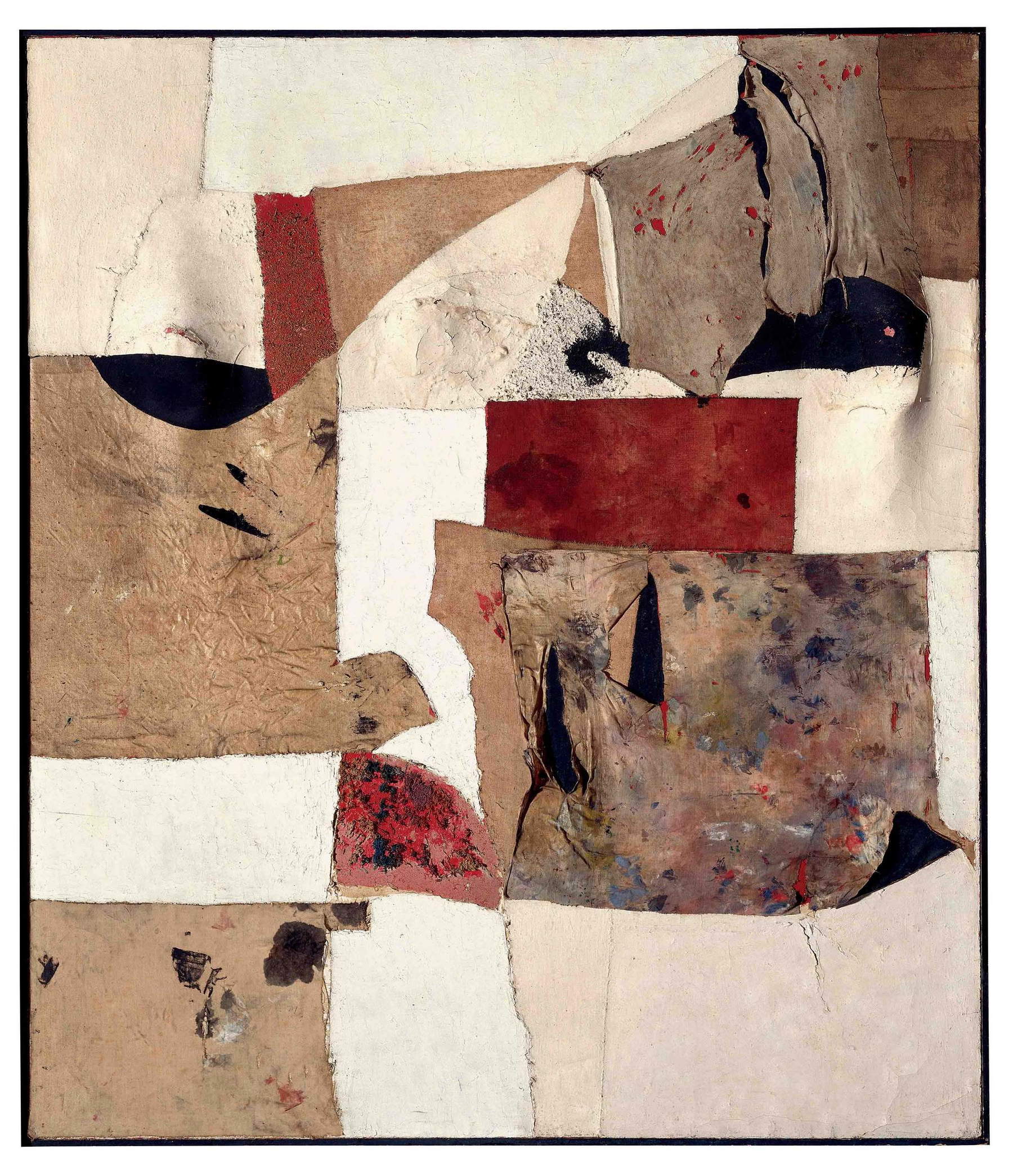
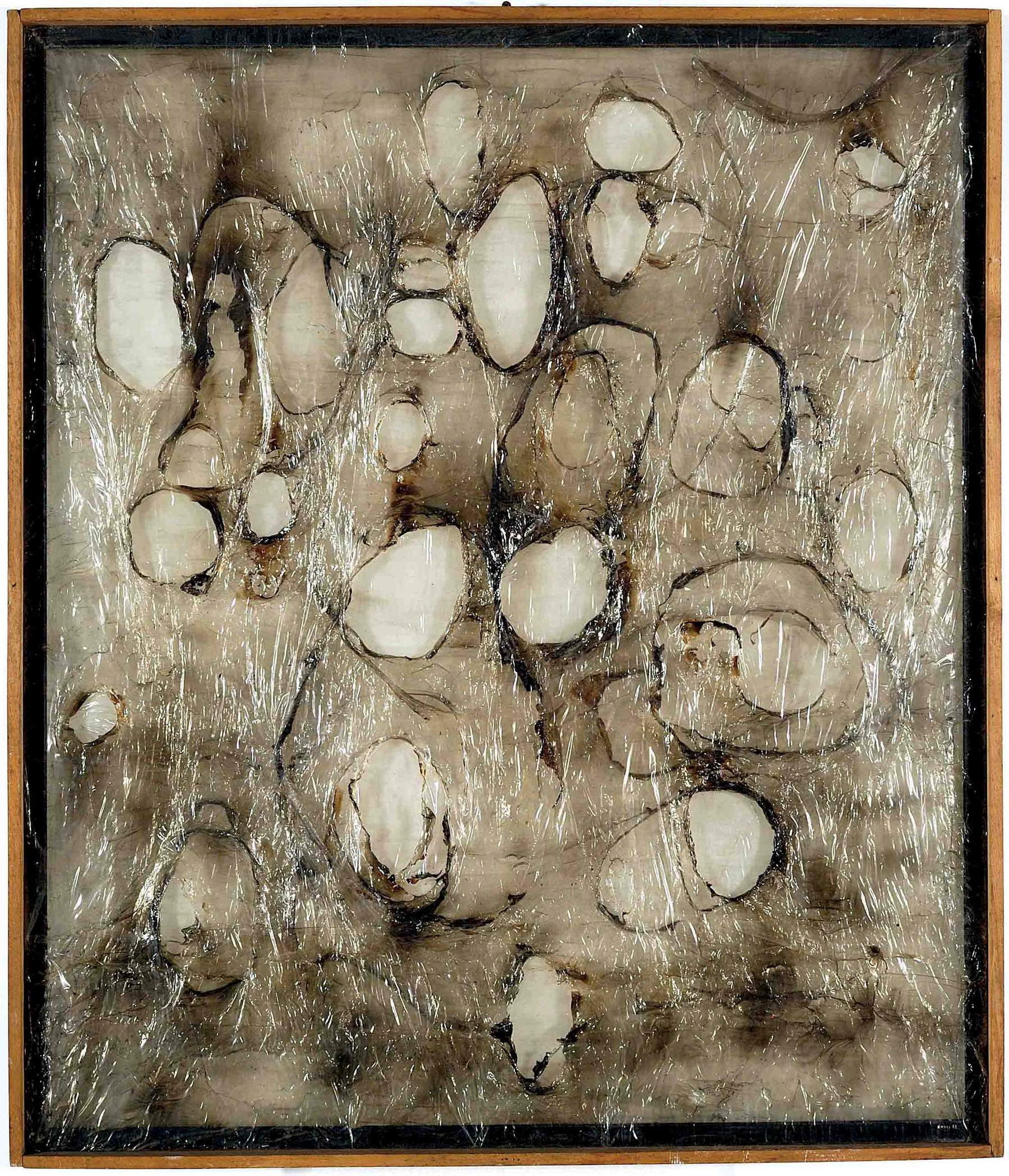
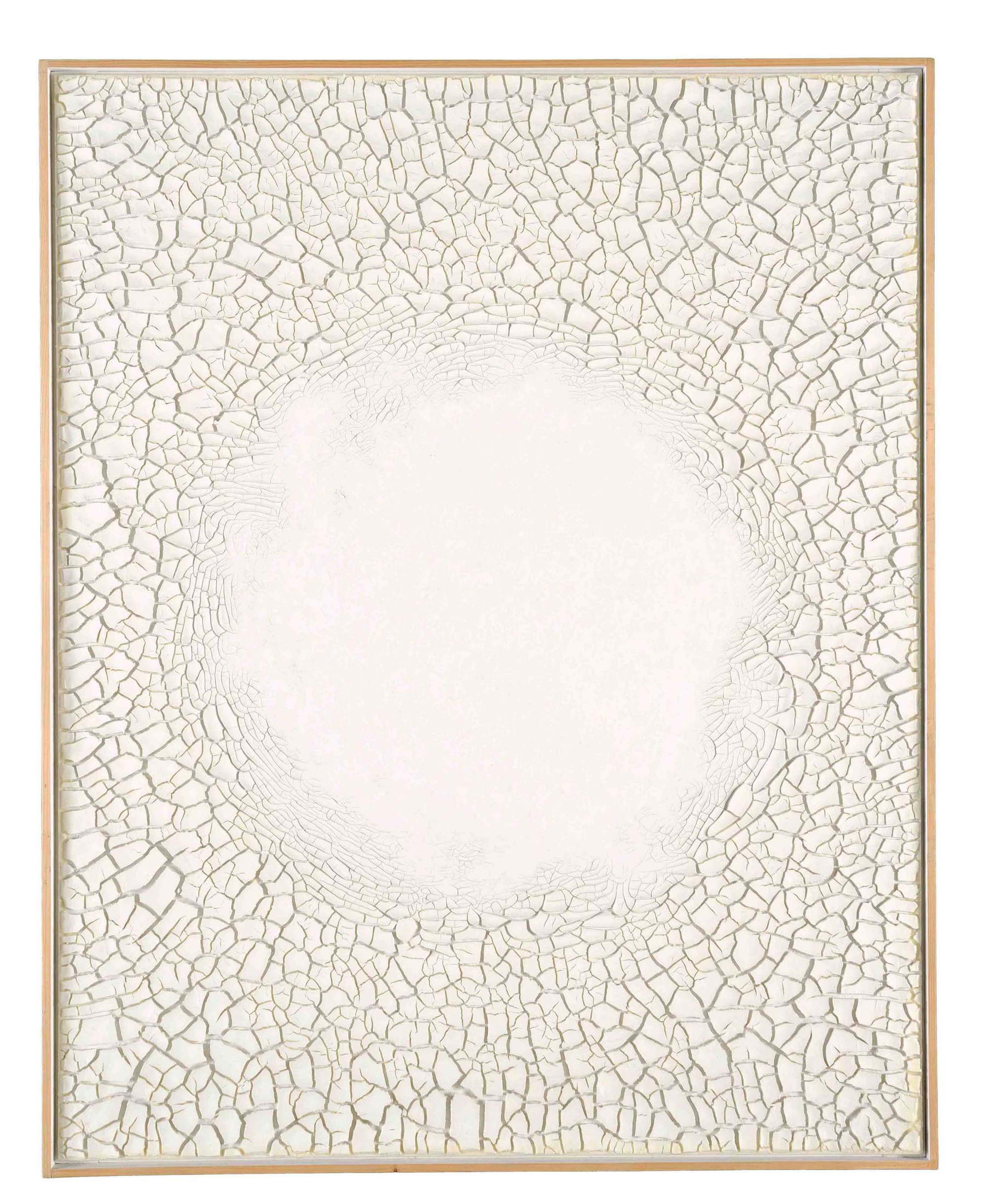
 |
| Lugano, the Giancarlo and Danna Olgiati Collection investigates the expressive power of matter with Prampolini and Burri |
Warning: the translation into English of the original Italian article was created using automatic tools. We undertake to review all articles, but we do not guarantee the total absence of inaccuracies in the translation due to the program. You can find the original by clicking on the ITA button. If you find any mistake,please contact us.